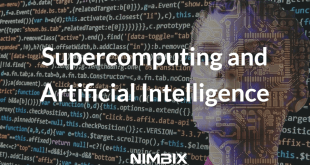ISR aircraft and drones have a rich history rooted in the evolution of military technology and tactics. From the early days of aerial reconnaissance in World War I to the advent of unmanned aerial vehicles (UAVs) or drones, these advanced systems have reshaped military operations and strategic thinking. These flying …
Read More »From Jeopardy Champion to AI Powerhouse: Evolution of IBM Watson 1.0 to WatsonX
Introduction: In the rapidly evolving landscape of artificial intelligence and cognitive computing, IBM Watson has been a pioneering force, continually pushing the boundaries of what’s possible. From its initial release as Watson 1.0 to the transformative WatsonX, IBM’s cognitive computing journey has been a remarkable exploration of innovation and advancement. …
Read More »Unlocking Sustainable Energy: AI Supercharges the Future of Energy Storage Systems
Introduction: In the ever-evolving landscape of technology, artificial intelligence (AI) has emerged as a catalyst for transformation across diverse industries. The energy sector is no exception, with AI presenting a promising avenue for enhancing the performance of Energy Storage Systems (ESS). This article explores how the integration of AI can …
Read More »Elevating Swarm Communications: ChatGPT’s Conversational Intelligence Meets Collective Collaboration
Swarm communication, characterized by the coordination and collaboration of multiple entities to achieve common goals, is a fascinating area that has witnessed significant advancements in various fields. From drone swarms for search and rescue missions to collaborative robotics in manufacturing, the ability of a collective to work in unison offers …
Read More »Supercharging Intelligence: The Rise of Supercomputers Optimized for AI and Machine Learning
Introduction: The realm of artificial intelligence (AI) and machine learning (ML) has witnessed a seismic shift in recent years, propelled by the remarkable success of deep neural networks. Central to this transformation is the unprecedented availability of computational processing power, setting the stage for groundbreaking achievements in AI. As complex …
Read More »Revolutionizing Military Team Performance: DARPA’s OP TEMPO Unveils Bio-Behavioral Signals as Objective Keys
DARPA’s relentless pursuit of innovation takes a groundbreaking leap with its latest program, the Objective Prediction of Team Effectiveness via Models of Performance Outcomes (OP TEMPO). This ambitious initiative aims to revolutionize the assessment of team performance by delving into the realm of bio-behavioral signals, including neural signals and communication …
Read More »Unleashing the Future: A Deep Dive into Programmable Photonics
Introduction: In the ever-evolving landscape of technology, scientists and engineers are constantly pushing boundaries to unlock new realms of possibilities. One such frontier that has emerged in recent years is programmable photonics – a groundbreaking field that promises to revolutionize the way we manipulate and harness light. In this blog …
Read More »Unlocking Insights with Automated Sentiment Analysis: Decoding the Power of Opinion Mining
In the digital age, where opinions flood the internet faster than a cat video goes viral, understanding what people really think is more important than ever. Enter sentiment analysis (SA), also known as opinion mining (OM), the secret decoder ring for deciphering the emotions hidden within text. In the vast …
Read More »Unlocking a New Era: Deep Learning Transforms Holography
Introduction: Digital holography, a prominent imaging technique, has garnered widespread attention for its ability to capture comprehensive wavefront information of 3D objects. Traditionally, the process involves acquiring a 2D hologram with an interferometer and an image sensor, followed by complex numerical reconstruction. Over the years, this method has faced challenges, …
Read More »Photonics: Illuminating the Path to 5G Excellence
Introduction: The 5G revolution has ushered in an era of unprecedented speed, ultra-low latency, and a hyper-connected world. Behind this digital transformation, photonics emerges as the unsung hero, wielding the power of light to shape the future of communication. Photonics, the science and technology of light manipulation, offers a plethora …
Read More » International Defense Security & Technology Your trusted Source for News, Research and Analysis
International Defense Security & Technology Your trusted Source for News, Research and Analysis

